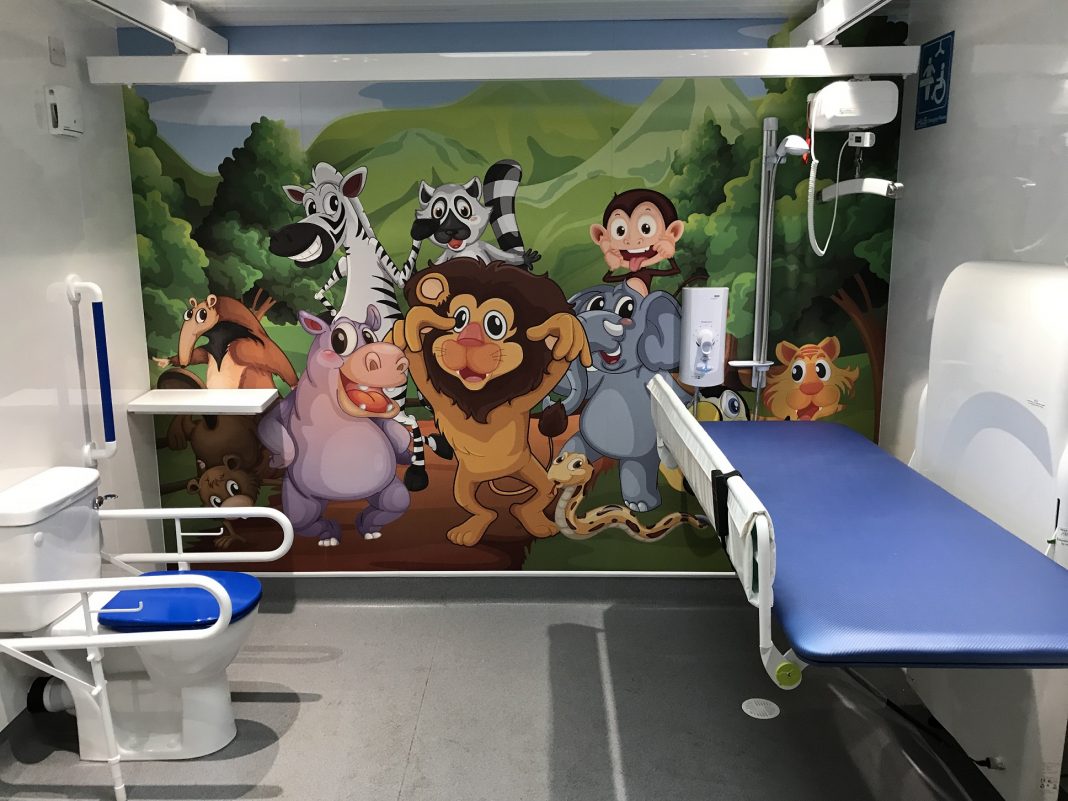I have been writing this column in various magazines since 2003, with over 170 destinations to date. But this month I am taking a step back and looking at Places to Go in a different way:
for those who need to go to the toilet and for whom there is little or no provision. This is for severely disabled people, adults as well as children, whose needs cannot be met by conventional accessible toilets, such as are generally found on trains today. For profoundly disabled people, transferring from a wheelchair to a toilet seat using grab rails is not enough.
These people need additional help, and usually find that they have to have their nappies changed on the floor of a public lavatory, which is not only undignified but also positively unhygienic. What is required is a proper hoist to move someone out of a wheelchair on to a bed, on to a toilet, and to a washbasin, with open space to accommodate someone who is assisting too. This type of toilet is known as a “Changing Places” toilet, and at the time of writing there were only 1,308 in the whole United Kingdom.
The Changing Places campaign was officially launched in July 2006. In celebration, the Consortium of charities which developed the concept decided to make July 19th an annual awareness day for the campaign. This year it falls on Friday. Changing Places Awareness Day is all about celebrating all that the campaign has achieved to date thanks to the dedicated support of campaigners from charities such as Muscular Dystrophy and MENCAP.
It also involves visitor attractions, leisure centres, motorway service stations, community centres, theme parks and museums. It is also an opportunity to help raise more vital awareness of the life-changing difference Changing Places toilets make to people’s lives – not just in the UK but around the world!
The only railway station with a Changing Places toilet that I am aware of is at York on the East Coast Main Line and managed by LNER. Owing to the required size of the toilet, which is 12 square metres, it is no possible to accommodate one on the train itself, but many passengers use it at the start or finish of their journeys, some even break a long journey to use it, and the LNER’s credit the facility is open for 24 hours so that even people who are not travelling by train can make use of it, even through the night. York as a city is well provisioned, with seven in the area, including McArthurGlen Designer Outlet. Durham has two at Freemen’s Quay Leisure Centre and the University on South Road. Just out of interest – if you have the luxury of nobody being severely disabled in your family – think about when you last went out by car or train and see if there would have been a facility on your trip.
To check where Changing Places toilets are, use uktoiletmap.org.
I had my eyes opened to this subject at a seminar arranged by the Changing Places charity with a manufacturer named iHus, based at Bircotes near Doncaster. The other major provider is aveso from Andoversford near Cheltenham.
For many families with a single disabled child, the whole decision about where the family can go for a day out is determined by where the Changing Places toilets are. Therefore, many theme parks and attractions have installed them to encourage visitors.
Even many motorway service stations are building them, and someday more railway stations too.






